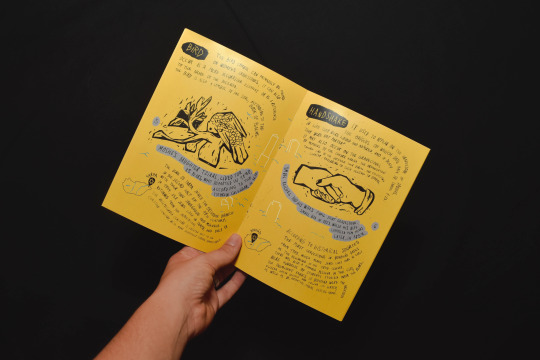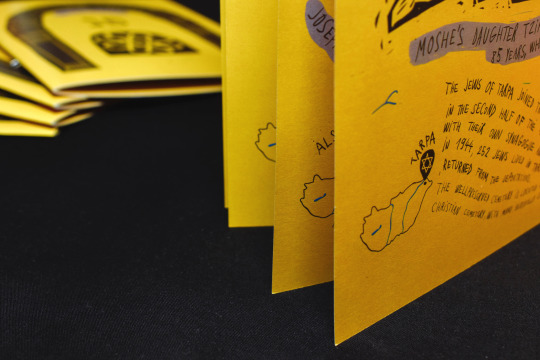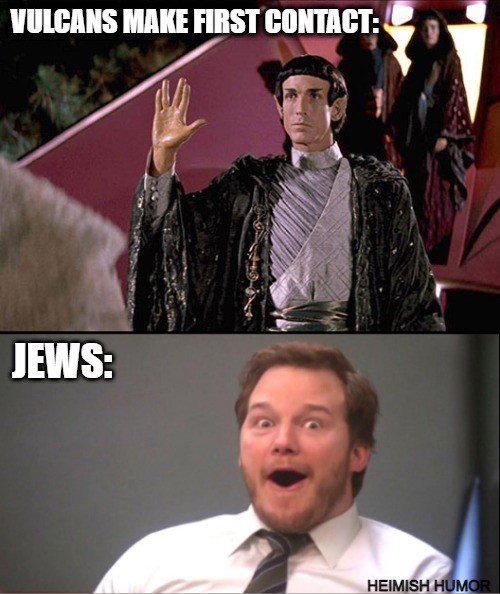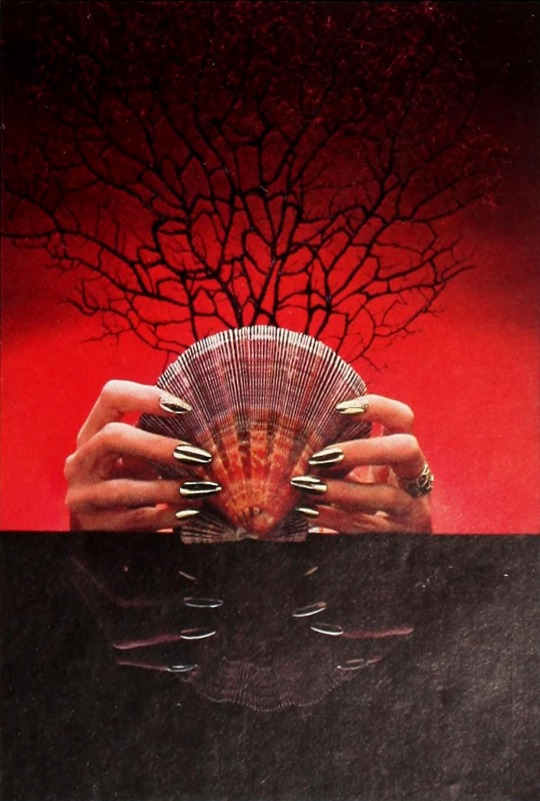#kohanim
Text
youtube
How can Jews serve God without a Temple, when the Torah speaks of it so often. Is the covenant broken and will this lead to the Jews to Jesus?
#WalktheBible#OrthodoxJews#Jews#Jewish#Temple#Worship#Torah#JewishTemple#Faith#Covenant#thirdtemple#jerusalemtemple#jerusalem#israel#BeitHaMikdash#Kohanim#levites#templepreparations#templemount#ancientisrael#biblicalarchaeology#biblearchaeology#HouseofYahweh#SecondTemple#templeofthelord#bible#scripture#paulbackholer#MaryBackholer#shorts
13 notes
·
View notes
Text





Here is the Art Of Abandoned Jewish Cemeteries of Hungary Zine that we worked on last year, its finally finished and ready for you to order and read it. We did a lot of research and work into this lovely little piece and we totally love it!!
You can order it here through Etsy, only a few in stock now!
Couple of words, why is it important to us, and in general:
We created this zine with goals in mind – our one aim was to present and preserve at least a small part of the very rich cultural and and artistic values that we can find in the jewish cemeteries of Hungary. Our goal is to introduce the reader to the fascinating and interesting world of symbols of the jewish cemeteries, and also to preserve the memories of the former rural jewish communities of the country through this zine.
The zine’s aim also to raise attention to the state of jewish cemeteries in Hungary (and in Eastern- Europe in general). Today in Hungary there are approximately 1600 jewish cemeteries, most of them, according to some estimates close to 1200 of them are abandoned, neglected cemeteries. Due to the Holocaust and the extermination of the rural hungarian jewry, these cemeteries remained without owner and caretaker, and slowly they are going towards destruction. In many cases, these cemeteries are the only remained build heritage or sight that left of the once thriving rural, hungarian jewish communities. A lot should be done in order to save this unique and important heritage – and this zine is only a small step in that direction.
Also please check out the Behance page of the zine:)
#zine#jumblr#jewish art#judaism#fanzine#print#symbolism#symbols#lions#kohanim#levites#blessing hand#hungary#magyar#rural#abandoned#cemetery#tombstone#death#jewish culture
136 notes
·
View notes
Text
youtube
Unveiling the Genetic Ties Of Paternal Haplogroup J
Dive into the fascinating world of Paternal Haplogroup J! Discover some of the most notable lineages linked to this haplogroup, including influential political leaders, revered royal families, and significant religious figures. See how Paternal Haplogroup J has impacted various cultures and how it bridges the gap between ancient ancestry and contemporary icons.
Mohammed bin Rashid Al Maktoum
Ibrahim Pasha Qataraghasi
Ali Mustafa Al-Musrati
Qajar Shah dynasty
Jarrahids
House of Saud
Hashemite Jordanian Royal Family
The Jewish priesthood (Cohanim) lineage
Katzenellenbogen Rabbinic Lineage
#PaternalHaplogroupJ#GeneticAncestry#HistoricalLineages#AncientDNA#FamilyHistory#CulturalImpact#GeneticConnections#NotableConnections#PaternalYchromosomeHaplogroupJ#BanuHashim#MohammedbinRashidAlMaktoum#AliMustafaalMusrati#QajarShahDynasty#QajarDynasty#Jarrahids#HouseofSaud#Hashemite#JordanianRoyalFamily#TheJewishPriesthood#CohanimLineage#KohanimLineage#Cohanim#Kohanim#KatzenellenbogenRabbinicLineage#Katzenellenbogen#ProphetMuhammad#ProphetAaron#TribeofLevi#RoyalLineage#s
0 notes
Text
Fall Feasts Come to Close, 5783/2022
God's Fall Appointments have come to an end. Here is a recap of events in and around Jerusalem as seen through the eyes of https://www.israel365news.com/
God’s Fall Appointments have come to an end. Here is a recap of events in and around Jerusalem as seen through the eyes of https://www.israel365news.com/
Israel365 was started on January 1, 2012 by Rabbi Tuly Weisz to connect Christians with the Land and the People of Israel, each and every day of the year, according to the verse in Deuteronomy above. Through the important causes we support and…

View On WordPress
#Feast of Booths#Hakhel#Israel365#jerusalem#Jesus Christ#Jubilee#kohanim#Levitical priests#Moses#Sabbatical year#Shemitah#Sukkot#Tabernacles#Temple Mount#water libation
1 note
·
View note
Text

Illustration of two hands from "Shefa Tal". First Edition. Hanau, 1612
These hands are divided into twenty-eight sections, each containing a Hebrew letter. Twenty-eight, in Hebrew numbers, spells the word Koach = strength. At the bottom of the hand, the two letters on each hand combine to form YHWH, the name of God.
115 notes
·
View notes
Text
Learned for the first time today at 26 years old that my father might be a Kohen??? I know my maternal grandfather was a Levite but that doesn't matter bc it's my mom's side. And I guess it also doesn't really matter if my dad is a Kohen since a) I'm not that observant (I walk through the local cemetery all the time and I'm not changing that based on this information, for example) and b) I'm not a man. Also I currently attend a Reform synagogue even if I'm not Reform where they don't care about that stuff. But like. Even if it makes no material difference it's still interesting
#text post#my post#today was my grandfather's funeral#i attended via zoom#and afterwards my dad brought up that he thinks his family are kohanim#and i was like okay first of all. how is this just coming up now. and second of all. you don't know?#he said he'd look into it for me bc i wanted to know#if you don't know what any of this means don't worry about it. random jewish stuff
7 notes
·
View notes
Text

Heimish Humor
37 notes
·
View notes
Text
3 notes
·
View notes
Text
We've got a kohen in the synagogue and whenever he does services he does birkat kohanim and it makes me kvell every time, just so ahh
3 notes
·
View notes
Text
youtube
🚨Episode 7 is now live🚨
Who told Netanyahu to prepare Israel for the Messiah, where will the Third Jewish Temple be built in Jerusalem, Israel, and what will happen to the Dome of the Rock and Al-Aqsa Mosque? Will they be moved in peacetime, shattered by an earthquake or will it be shared sovereignty. We’ll examine where the Jewish Temples stood and what this means for the Third Jewish Temple in Jerusalem, Israel.
#3rdtemple#thirdtemple#jerusalemtemple#jerusalem#israel#BeitHaMikdash#Kohanim#levites#templepreparations#templemount#walkthebible#ancientisrael#biblicalarchaeology#biblearchaeology#HouseofYahweh#Temple#SolomonsTemple#templeofthelord#bible#scripture#paulbackholer#MaryBackholer#Backholer#WalktheBible#holyland#Jesus#God#DomeoftheRock#Solomon#netanyahu
3 notes
·
View notes
Text

שַׁבָּת שָׁלוֹם עֲדַת יִשְׂרָאֵל🤍✨💫אָמֵן
הַלְלוּיָהּ
#holiness#prayers#faith#sacred#holyland#jewish#shabbat shalom#shabbos#shabbatblessing#starofdavid#shabbat#birkat kohanim#blessing#god bless#blessings#blessings from god#blessed#bible#biblical roots#biblicalprayers#biblical
1 note
·
View note
Text

Dive into this infographic from Connect Contemporary and explore the comprehensive neighborhood guide to inspiring art galleries in Atlanta, GA.
0 notes
Text
wait do reform Jews not recognize kohanim??
129 notes
·
View notes
Text

In September 2009, Leonard Cohen performed at Tel Aviv's Ramat Gan Stadium, his first appearance in Israel since 1985. At the end of the concert, Cohen raised his hands in a rabbinical gesture and recited in Hebrew the birkat kohanim, the priestly blessing, to the crowd.
17 notes
·
View notes
Note
are hamsas a jewish thing? i see them all over jewish sites and in synagogues but i also see gentiles using/wearing them???
Short answer: Yes, hamsas are a Jewish thing, but they're not exclusively Jewish.
An open palm as a symbol is seen throughout the Middle East, and it is given many names and meanings. There is no consensus as to the origin of the symbol, but considering hand prints are seen even in paleolithic art all across the world, it wouldn't be that hard to see how a hand could become such an important symbol.
In Judaism, hands are often featured in artwork as the two hands of the Kohanim during the Priestly Blessing and as references to God's mighty hand when freeing the Jews from Egypt. Hamsas have been used as Jewish amulets since at least the Middle Ages, and there's evidence of hand symbology being used even earlier. The belief in Ayin Hara (The Evil Eye), which is often tied to Hamsas, is also a very old Jewish belief. It, too, is not an exclusively Jewish belief, but rather a belief common among Middle Eastern and Meditteranean cultures.
Not all Jews use the Hamsa as a symbol, and indeed many frown on it, seeing it as a superstition that is best not touched. However, it has been used for a long time by Sephardi and Mizrachi Jews, as well as more Kabbalistic Ashkenazi Jews.
Because of its appearence in both Jewish and Muslim cultures, the hamsa has become a symbol of Judeo-Islamic unity by some people. In 2009, the Hamsa Flag was envisioned as the flag of a united Israeli-Palestinian state.
In conclusion,
RATING: JEWISH (BUT NOT EXCLUSIVELY)
Further reading about Hamsas, Amulets, and the Evil Eye:
Sagiv, Gadi. “Dazzling Blue: Color Symbolism, Kabbalistic Myth, and the Evil Eye in Judaism.” Numen, vol. 64, no. 2/3, 2017, pp. 183–208. JSTOR, http://www.jstor.org/stable/44505334.
SABAR, SHALOM. “From Sacred Symbol to Key Ring: The Ḥamsa in Jewish and Israeli Societies.” Jews at Home: The Domestication of Identity, edited by SIMON J. BRONNER, Liverpool University Press, 2010, pp. 140–62. JSTOR, https://doi.org/10.2307/j.ctv1rmjz2.8.
Hamsa (Aish.com)
Amulets and Talismans (YIVO encyclopedia)
The Hamsa In Jewish Thought and Practice (Times of Israel)
Hamsa Flag (Ayin Press)
400 notes
·
View notes
